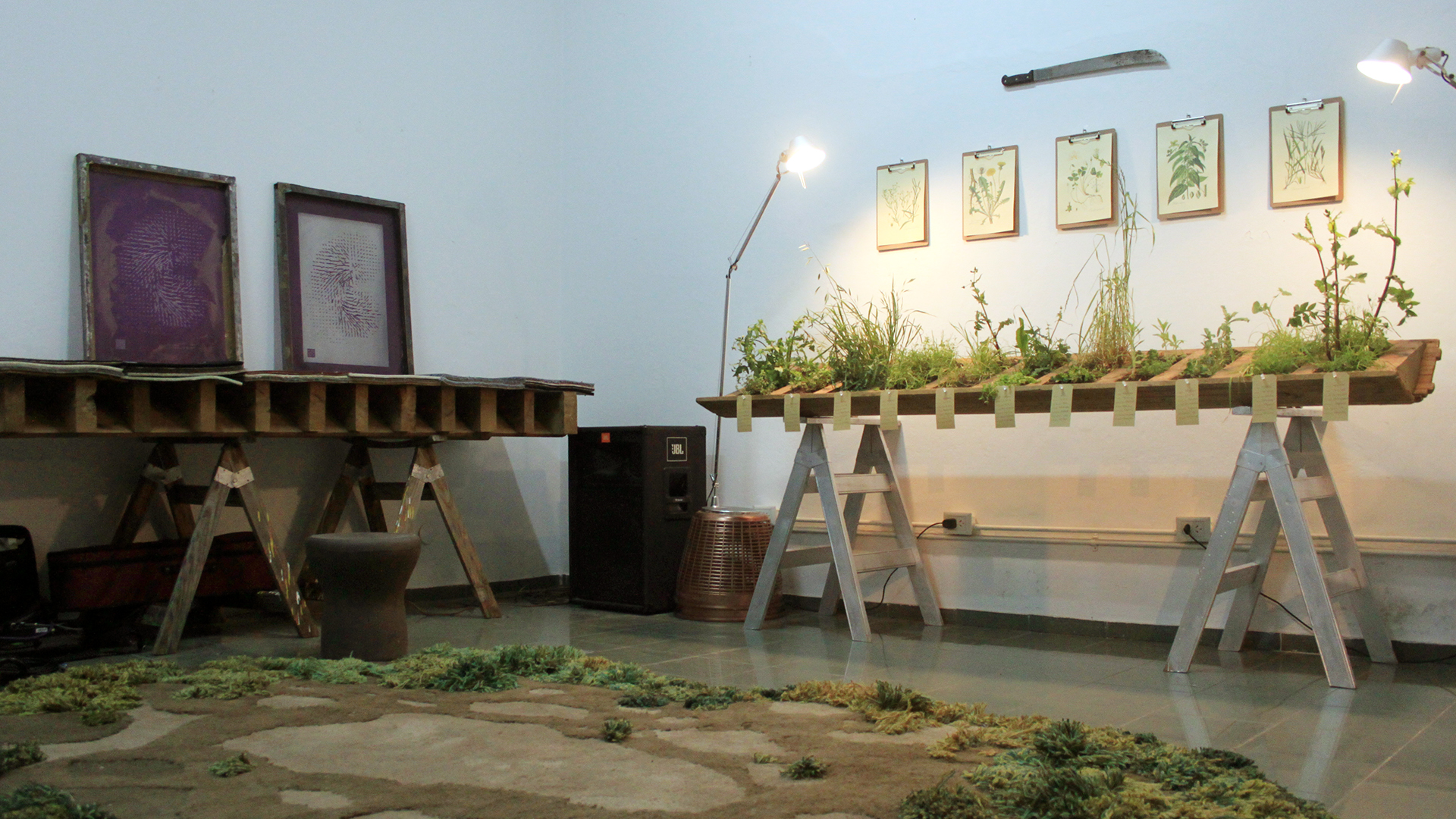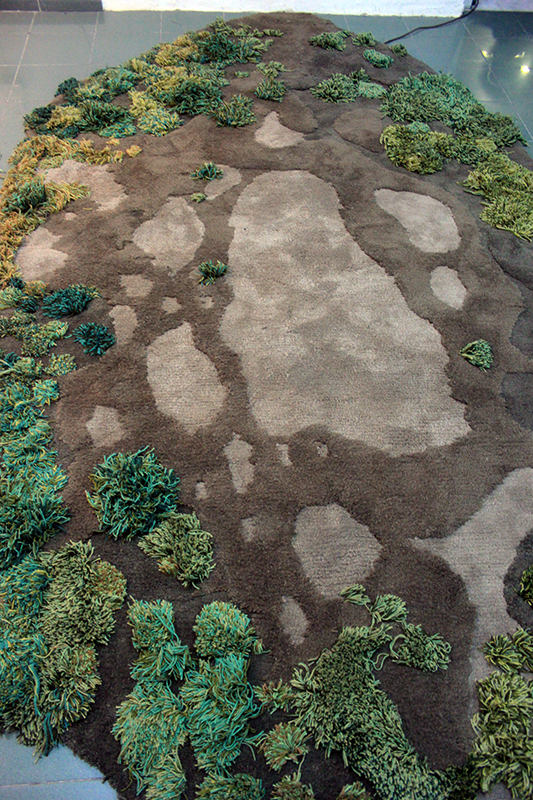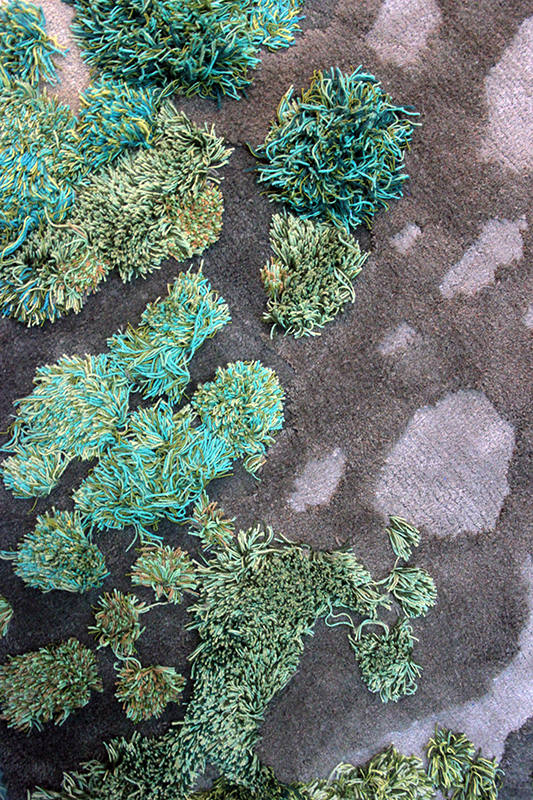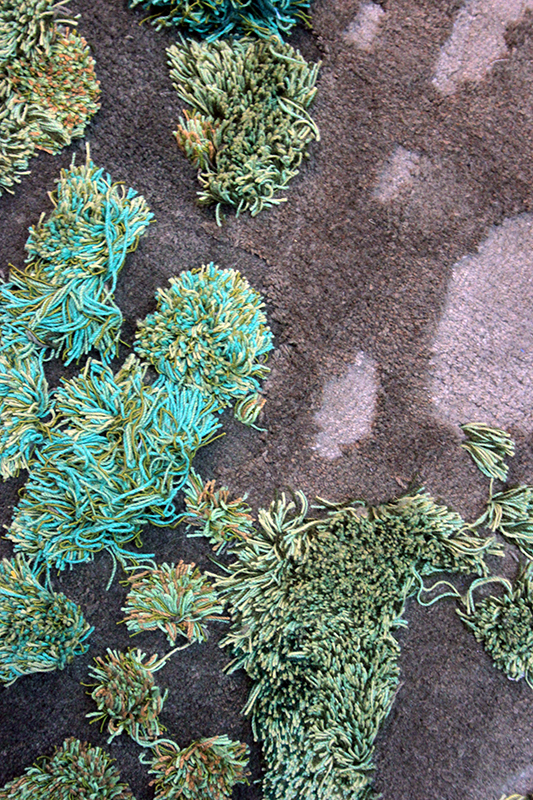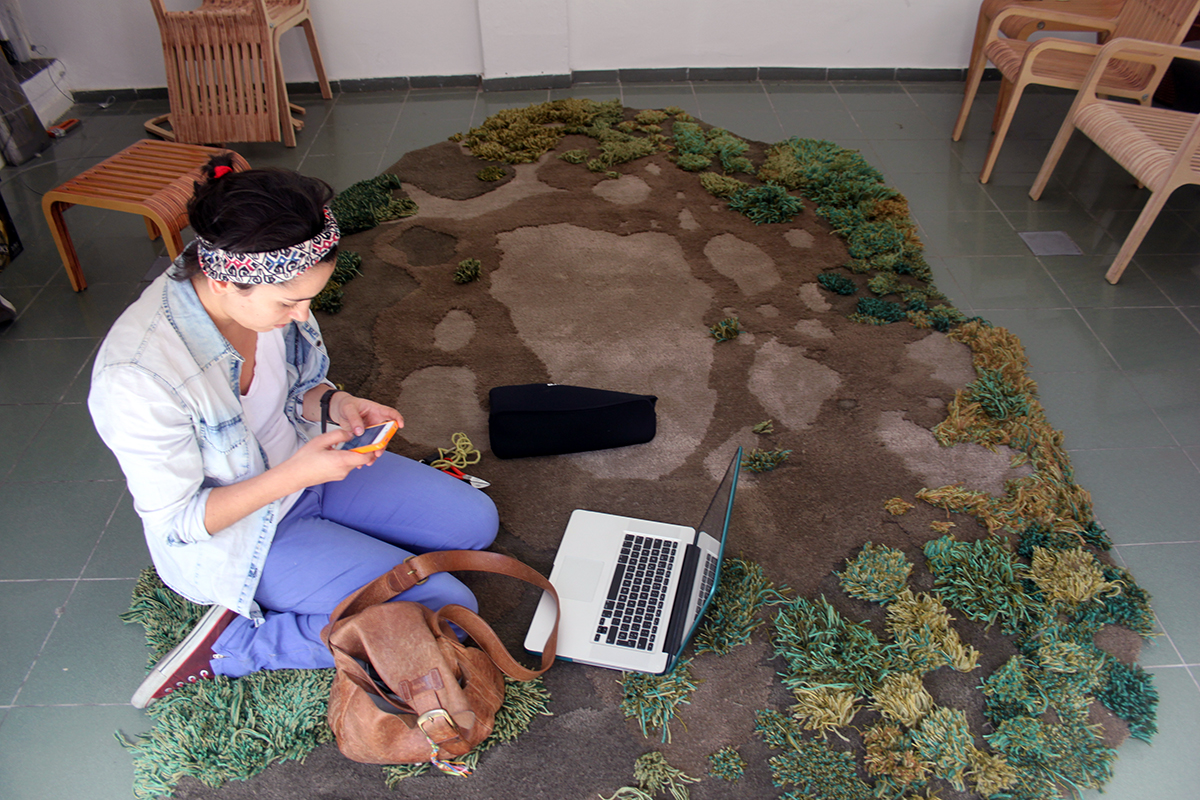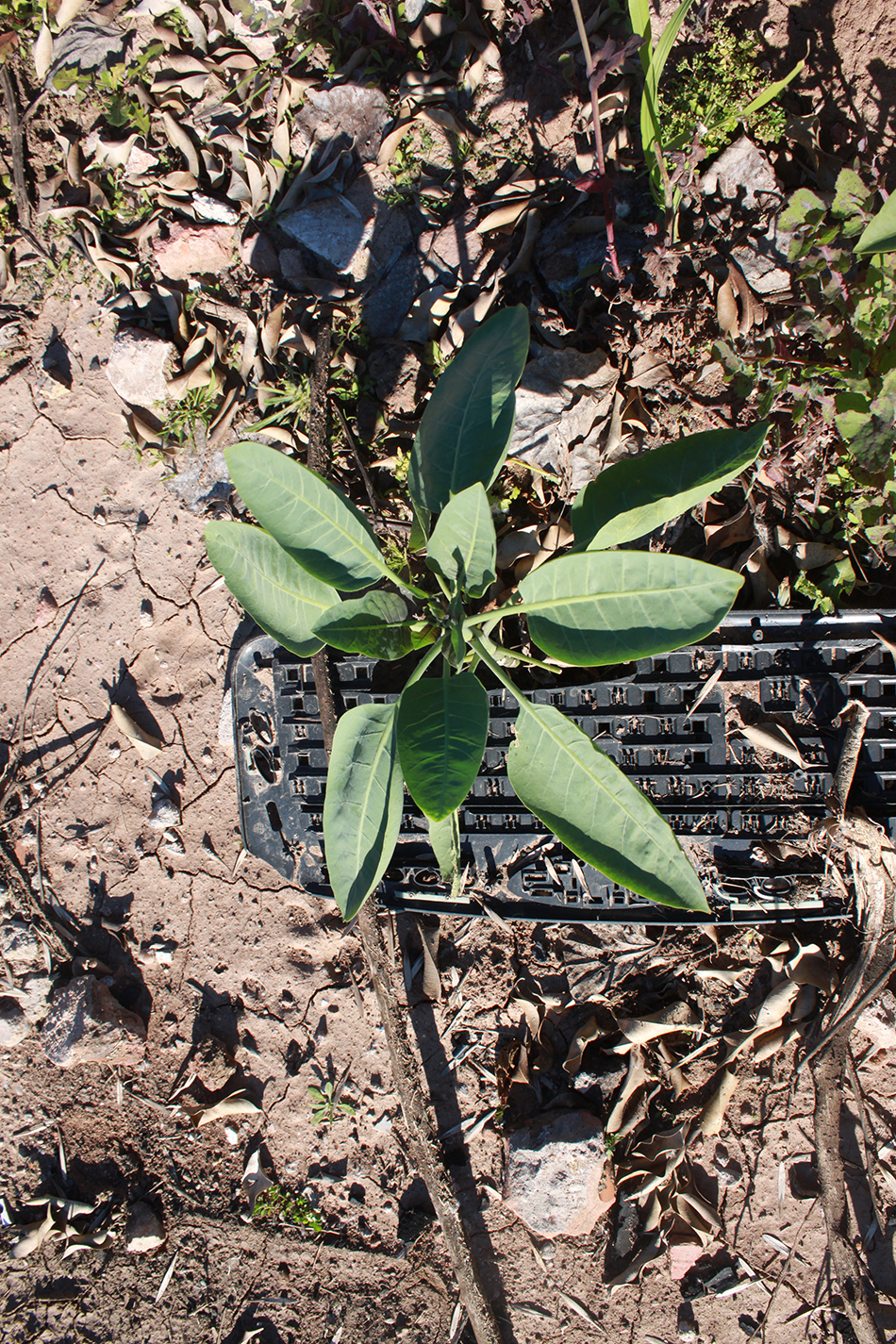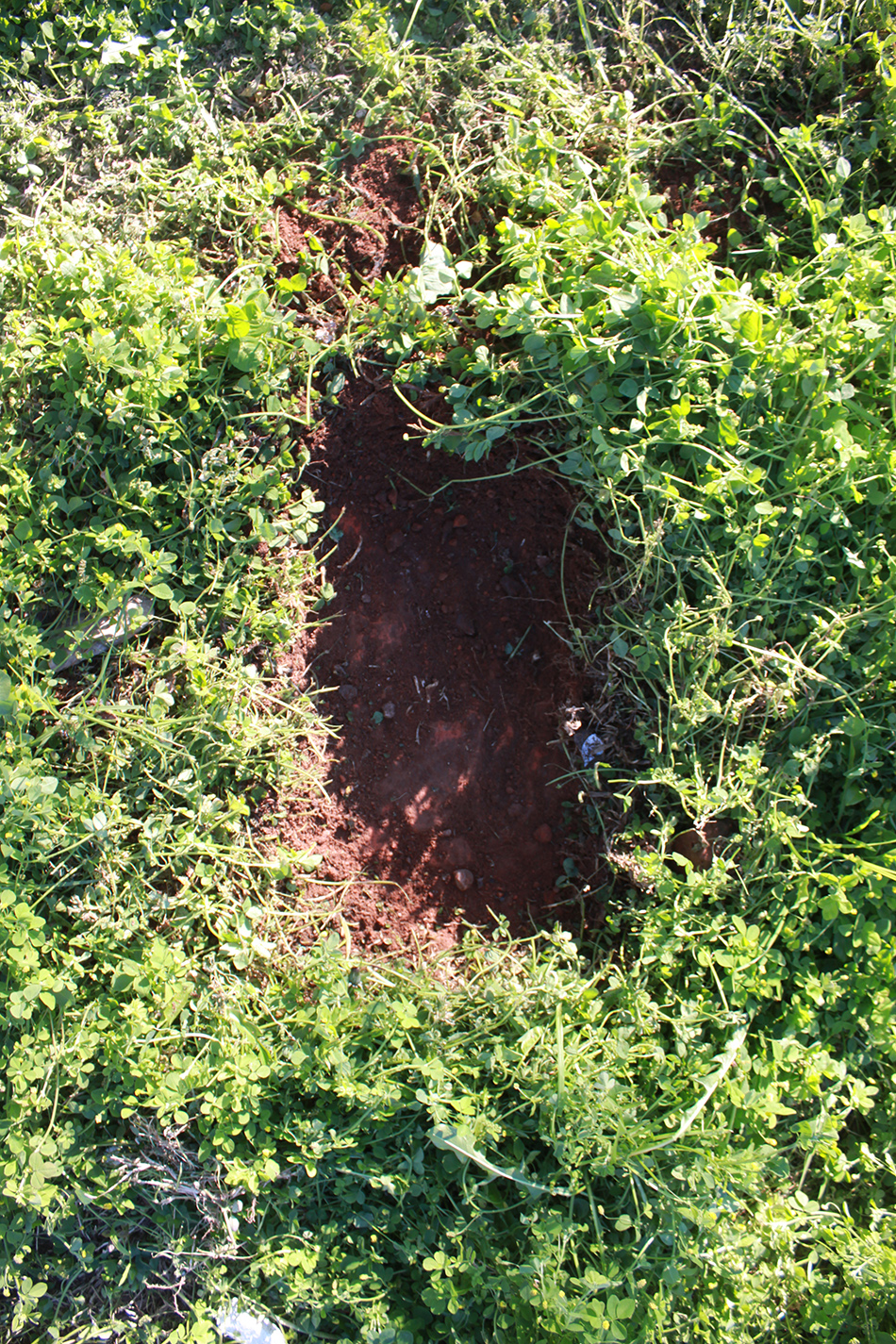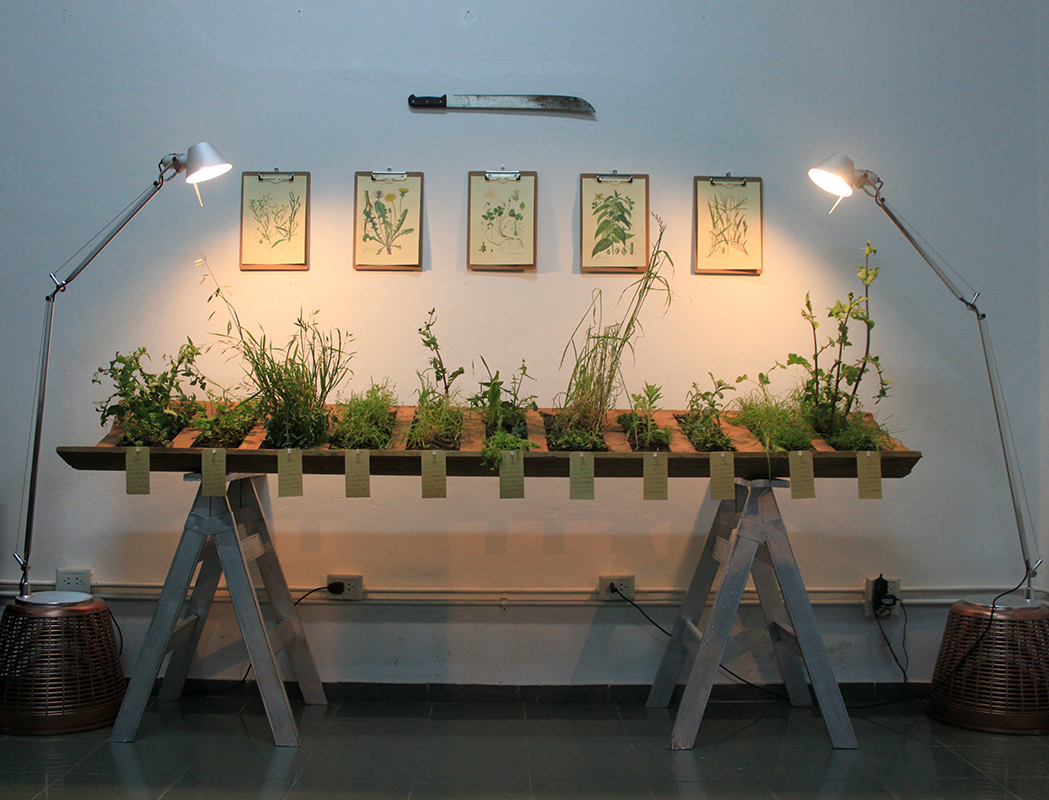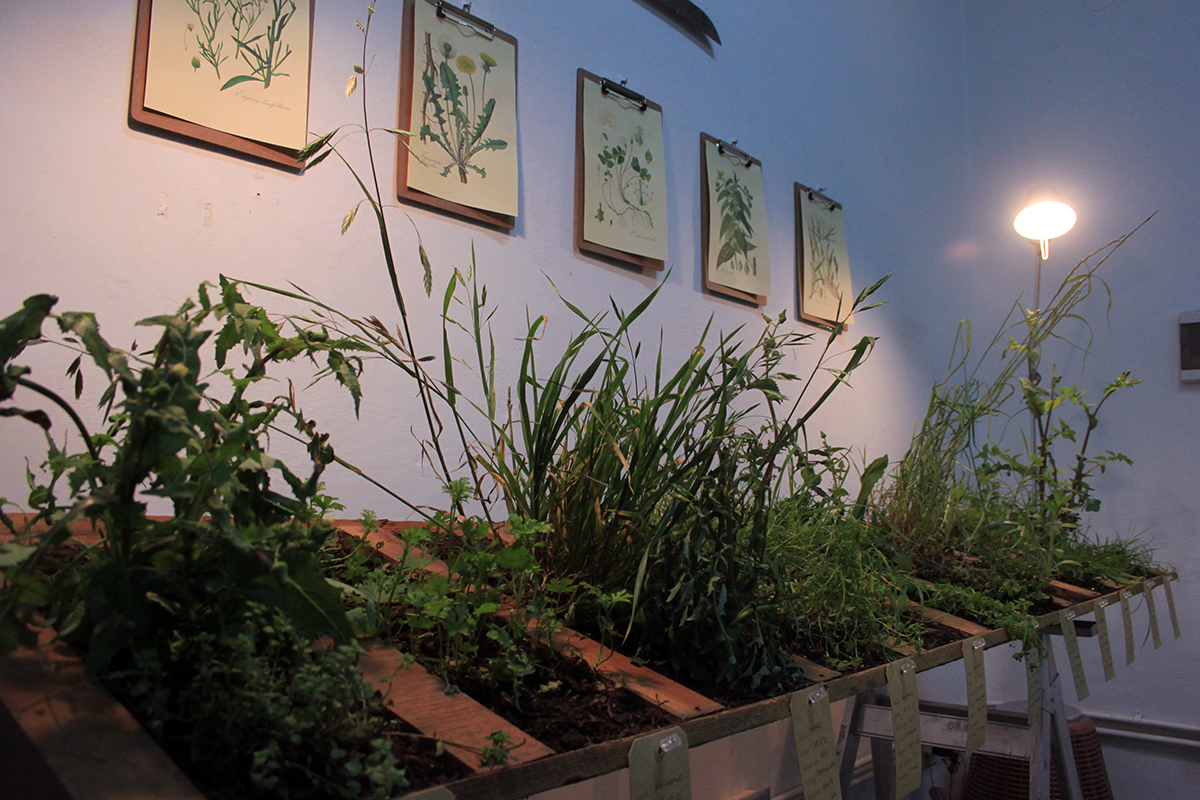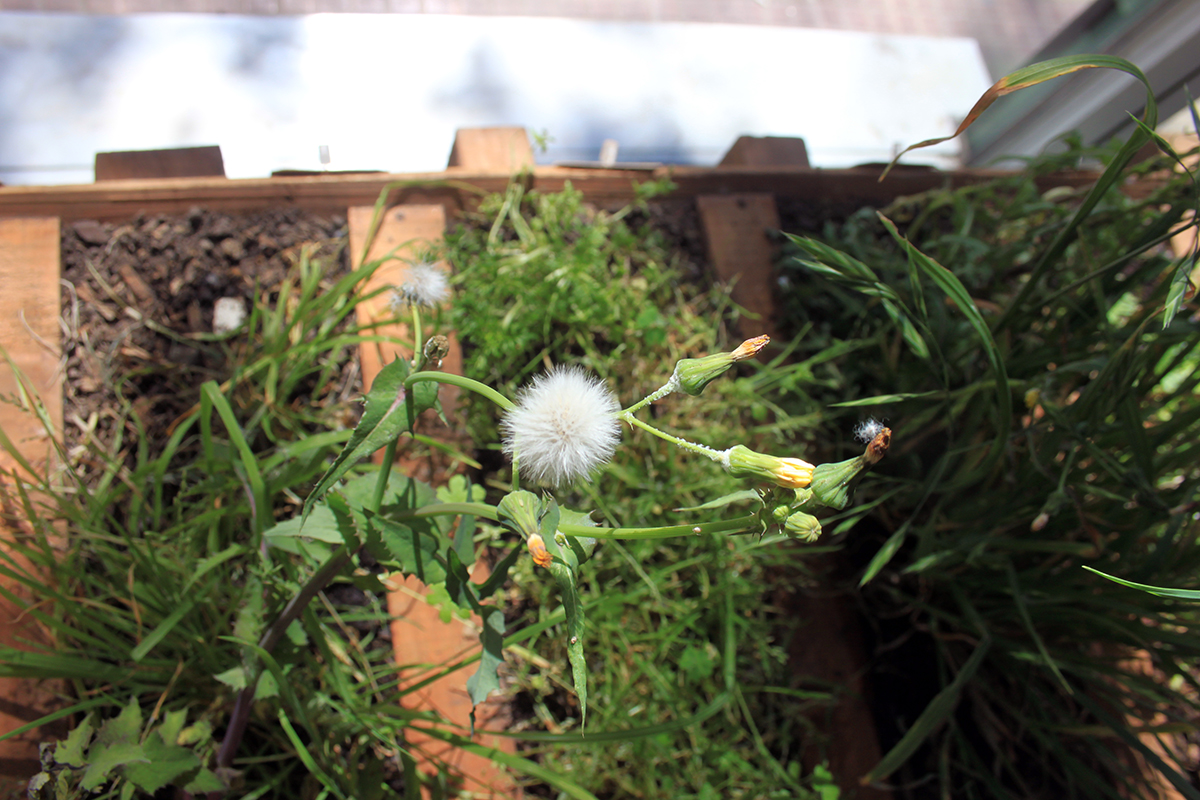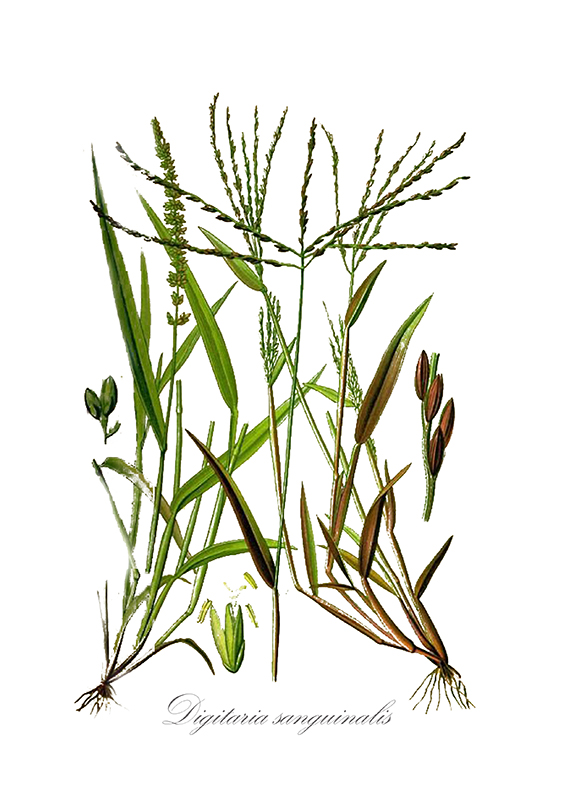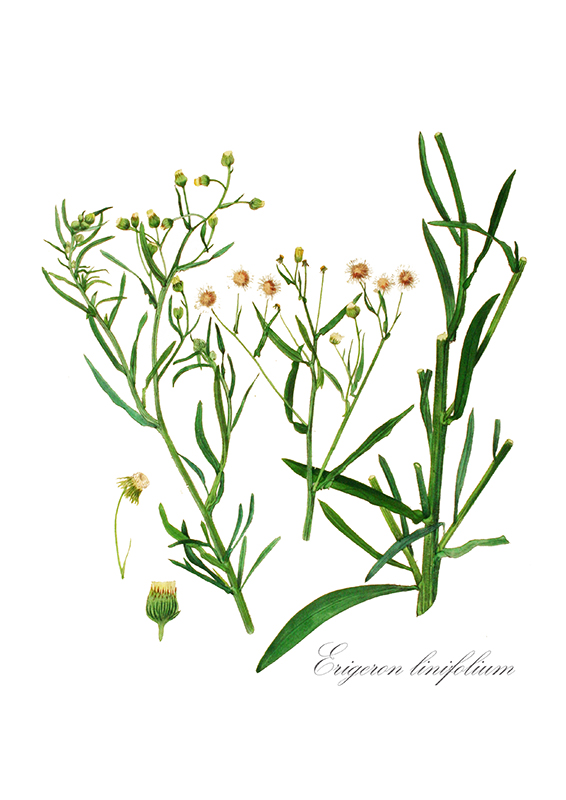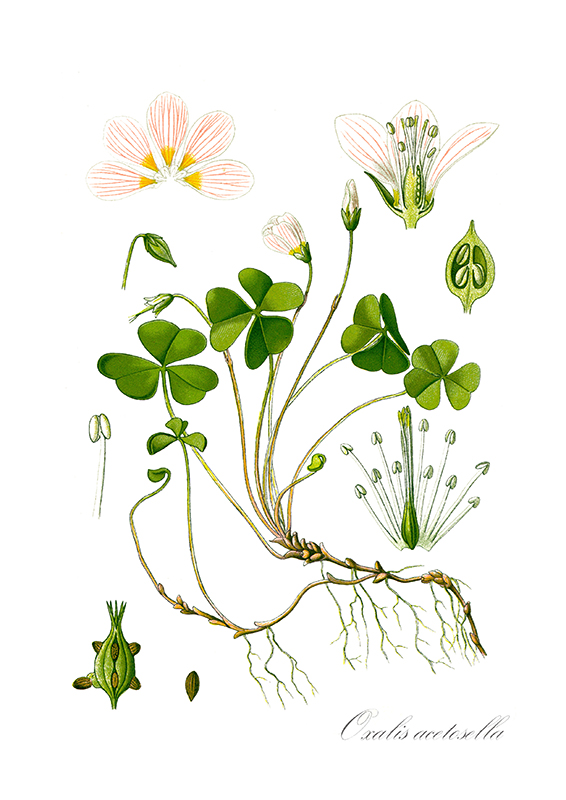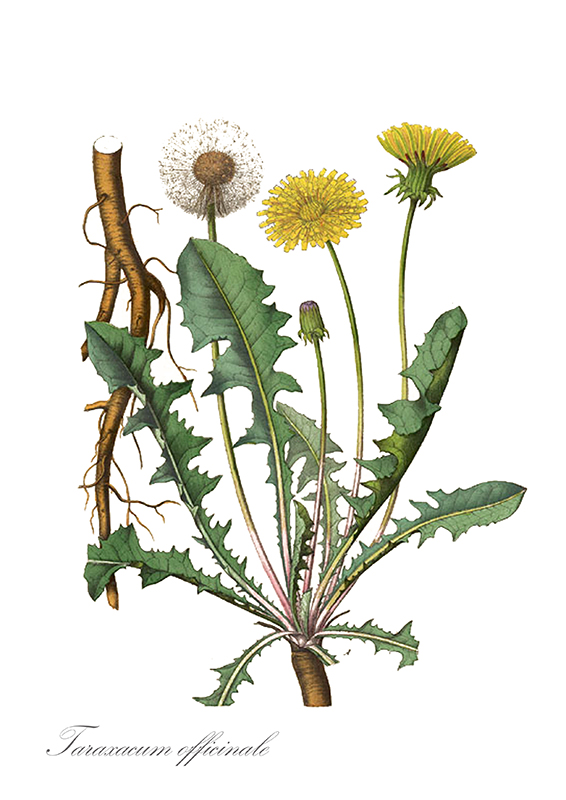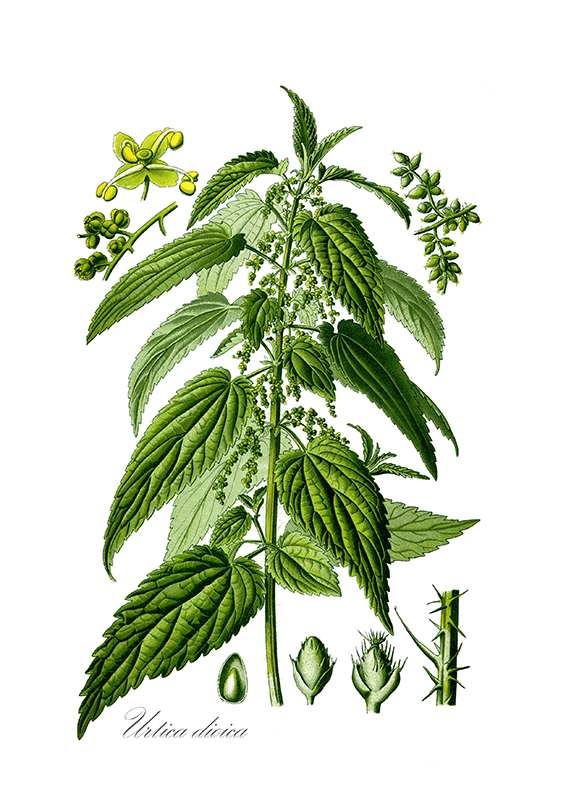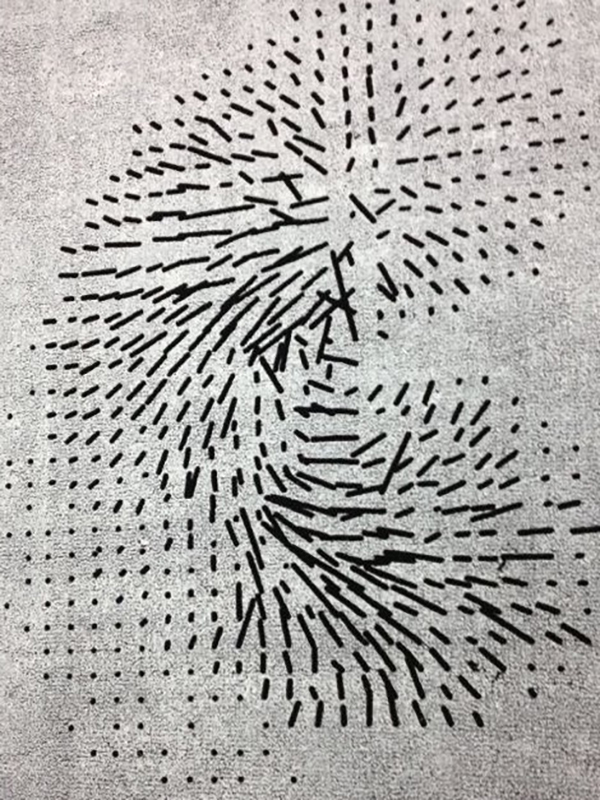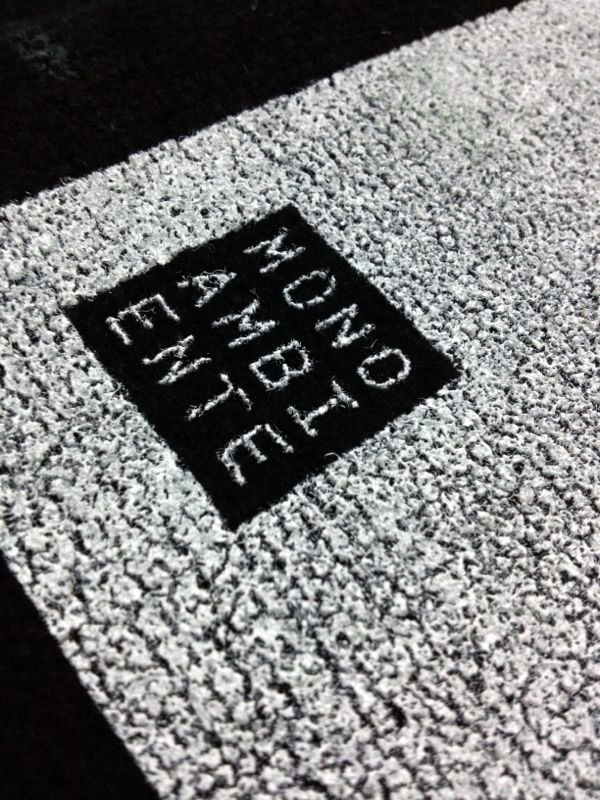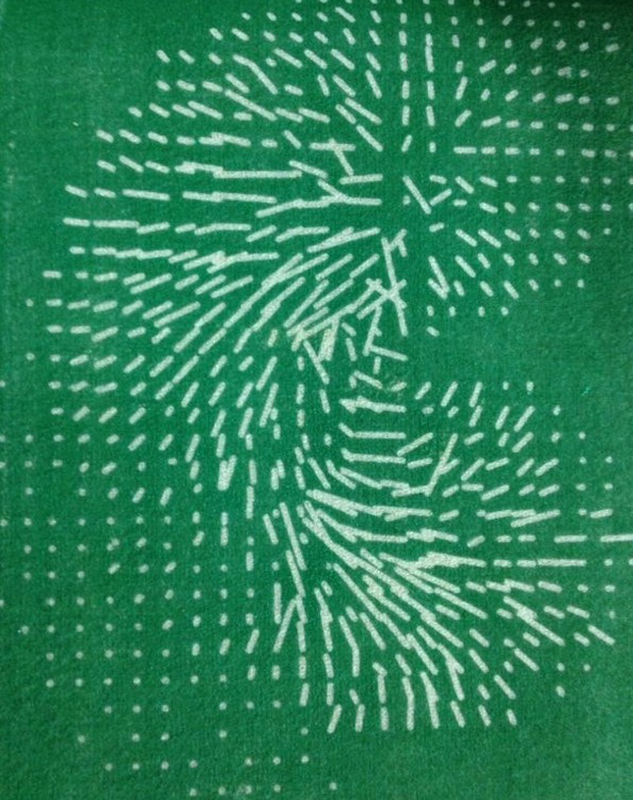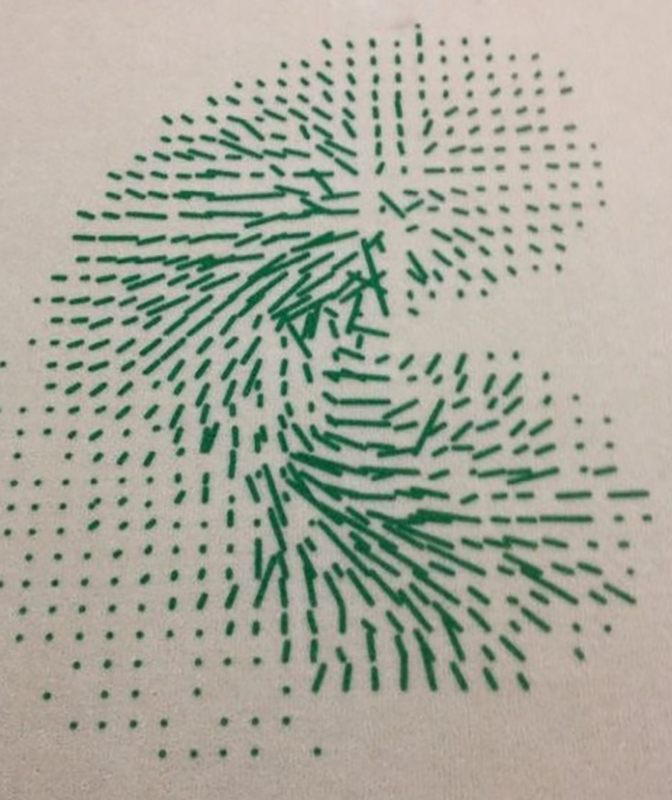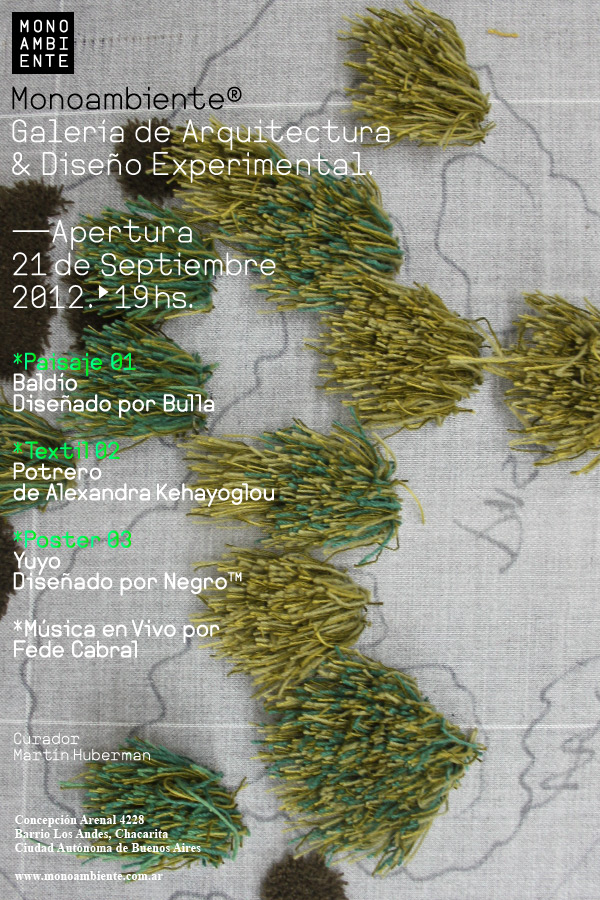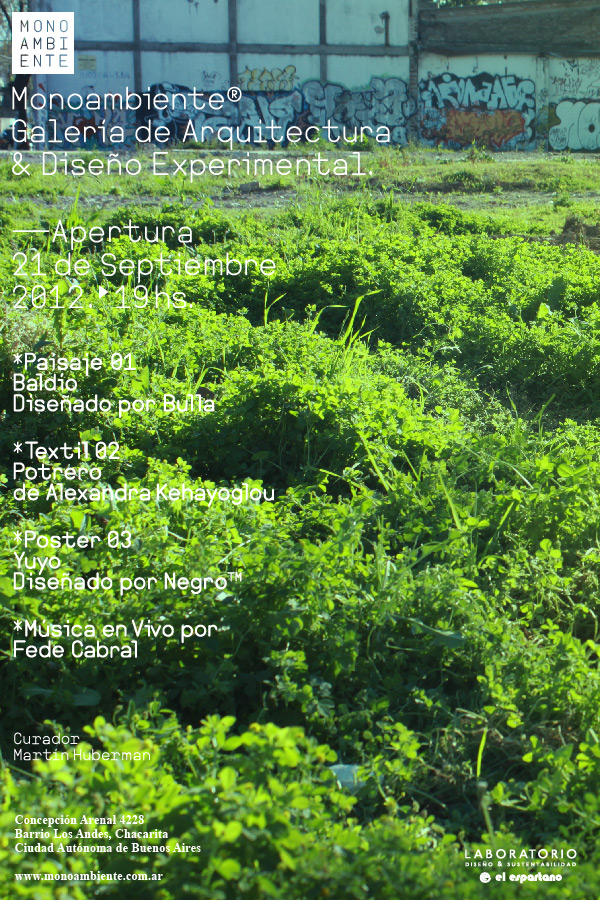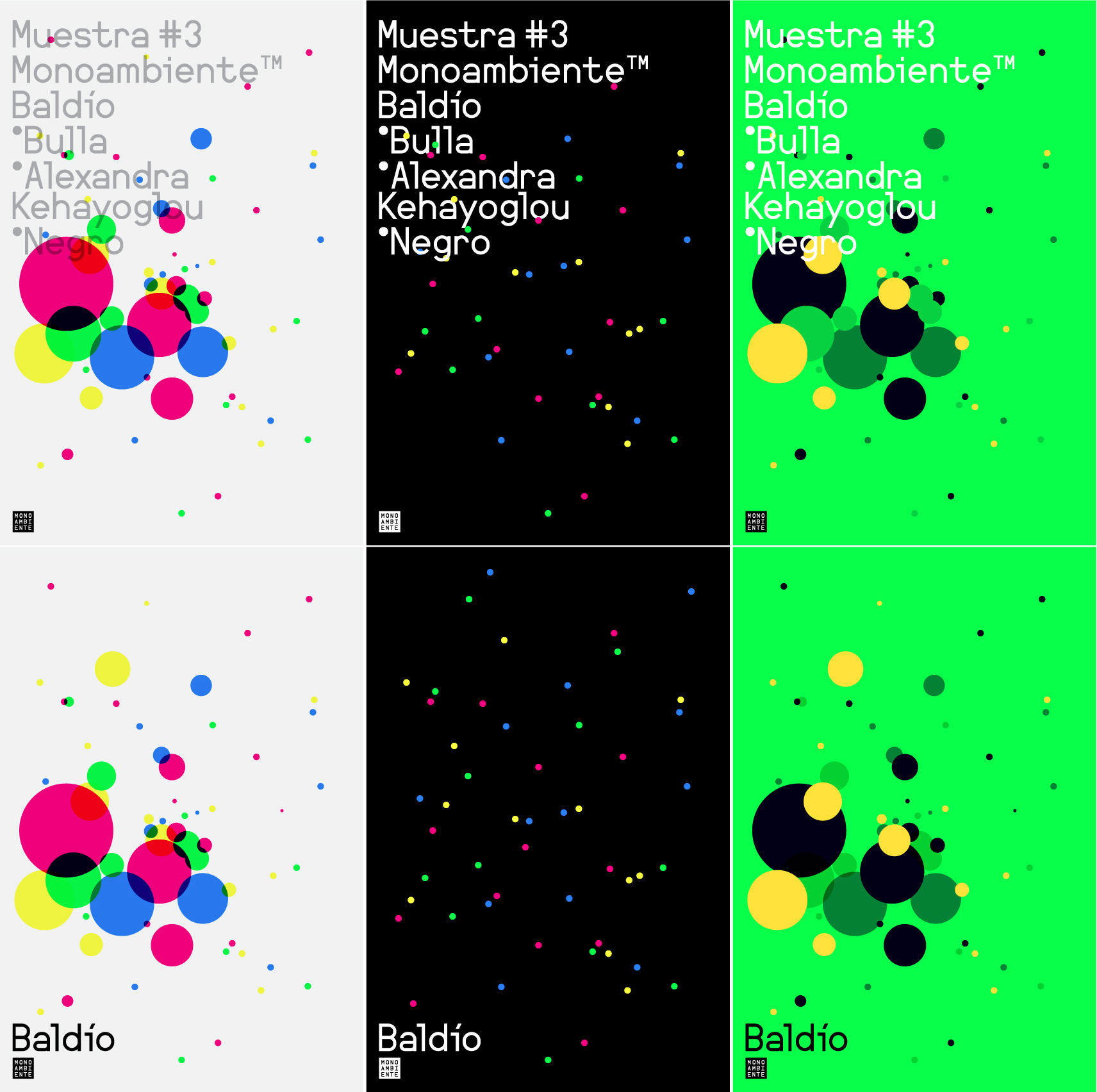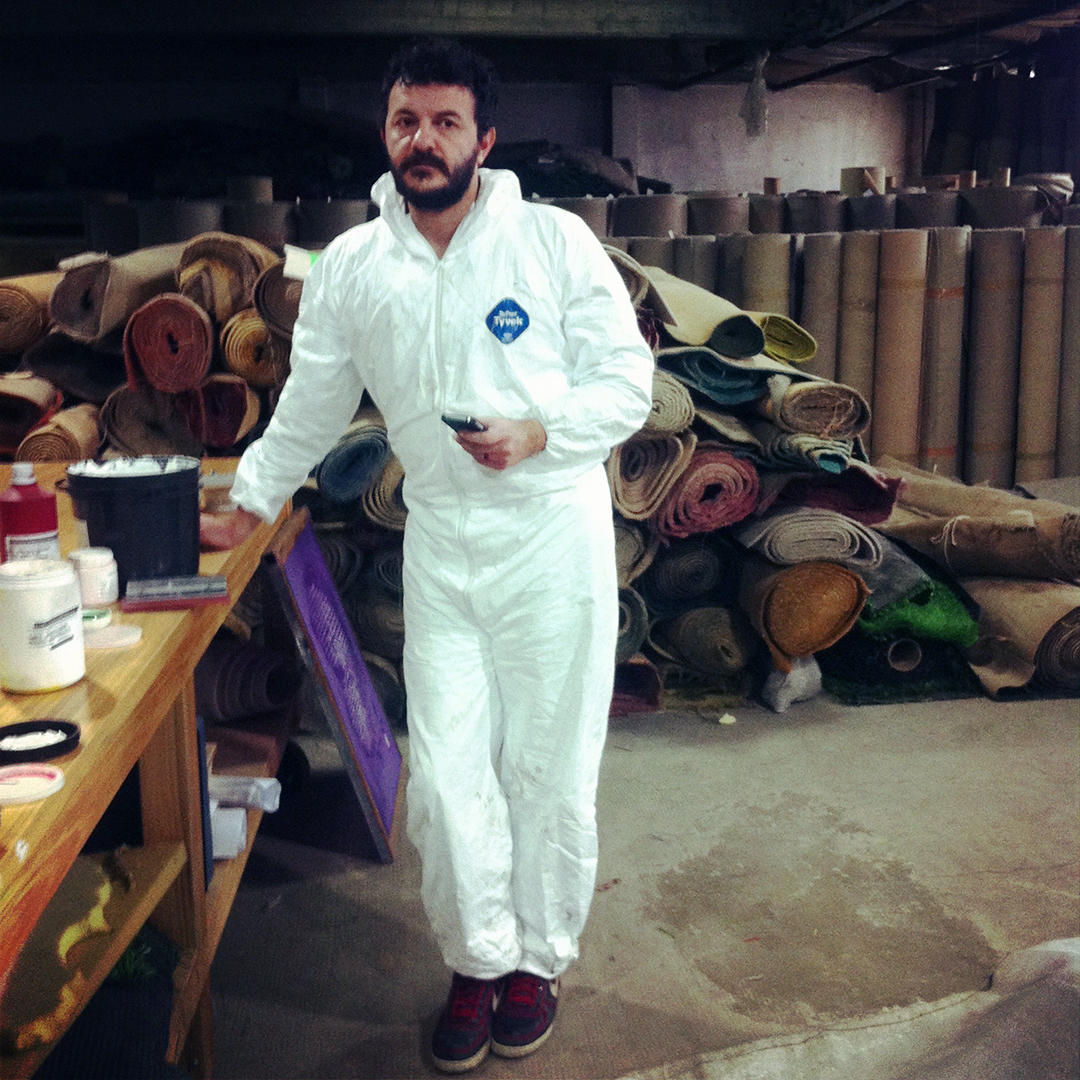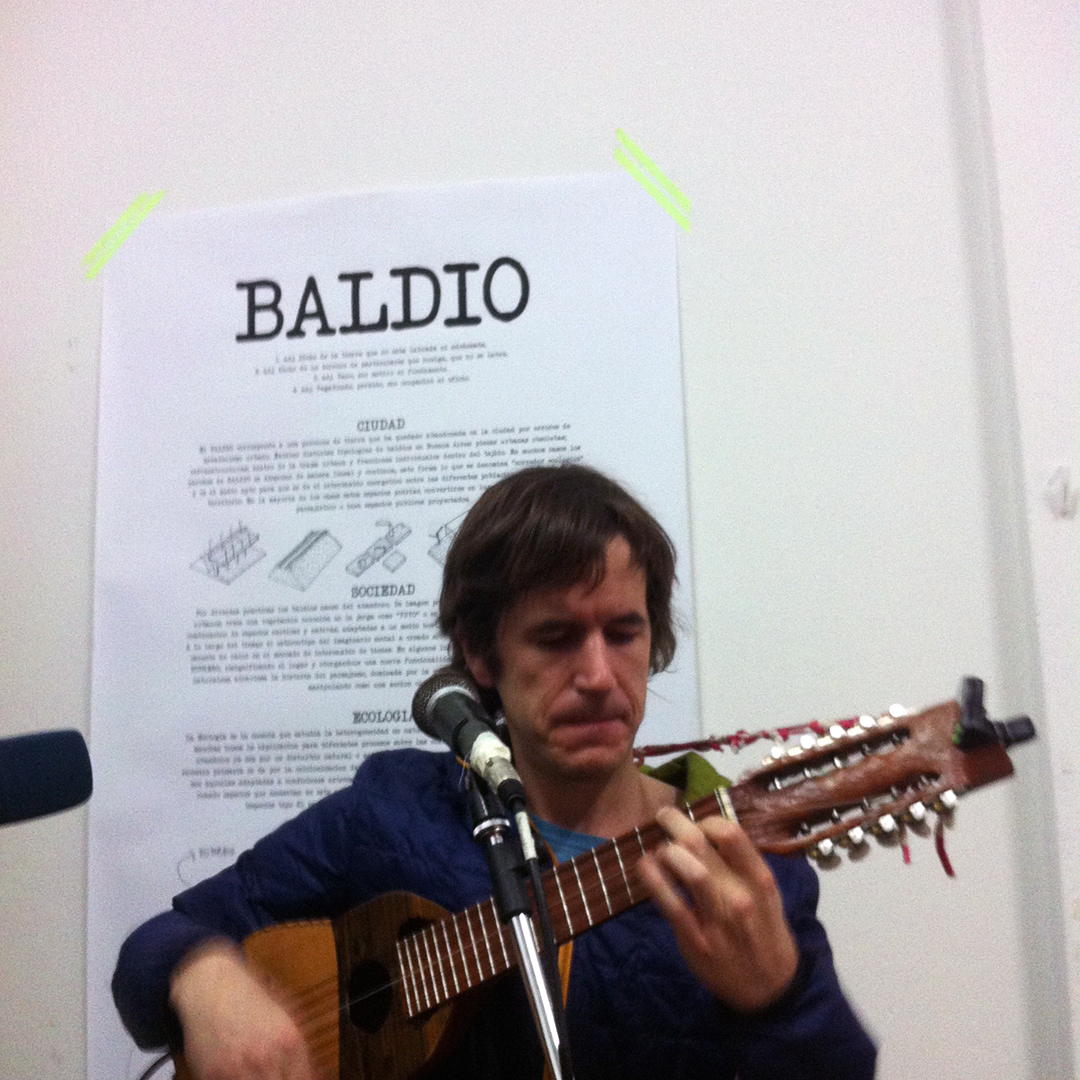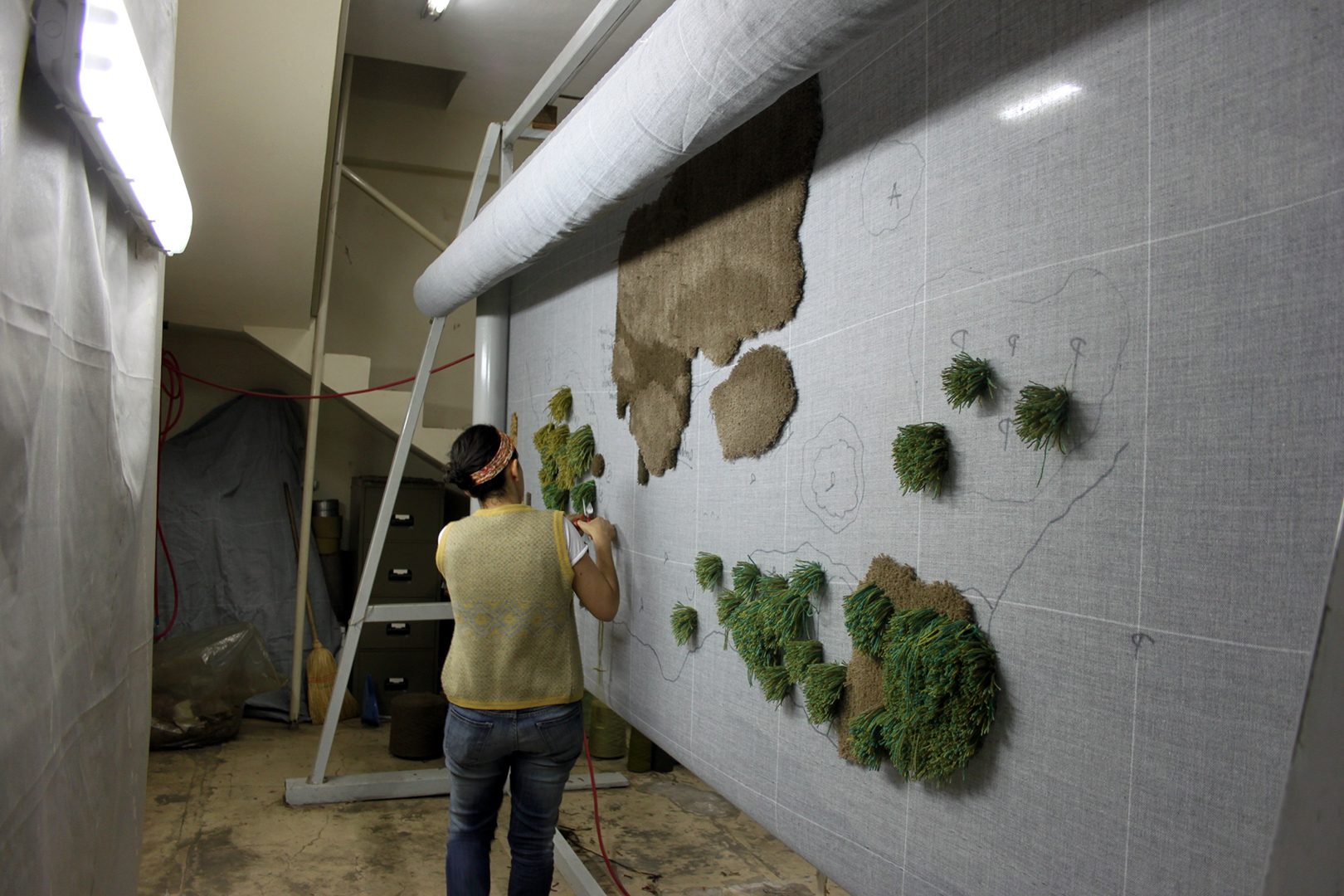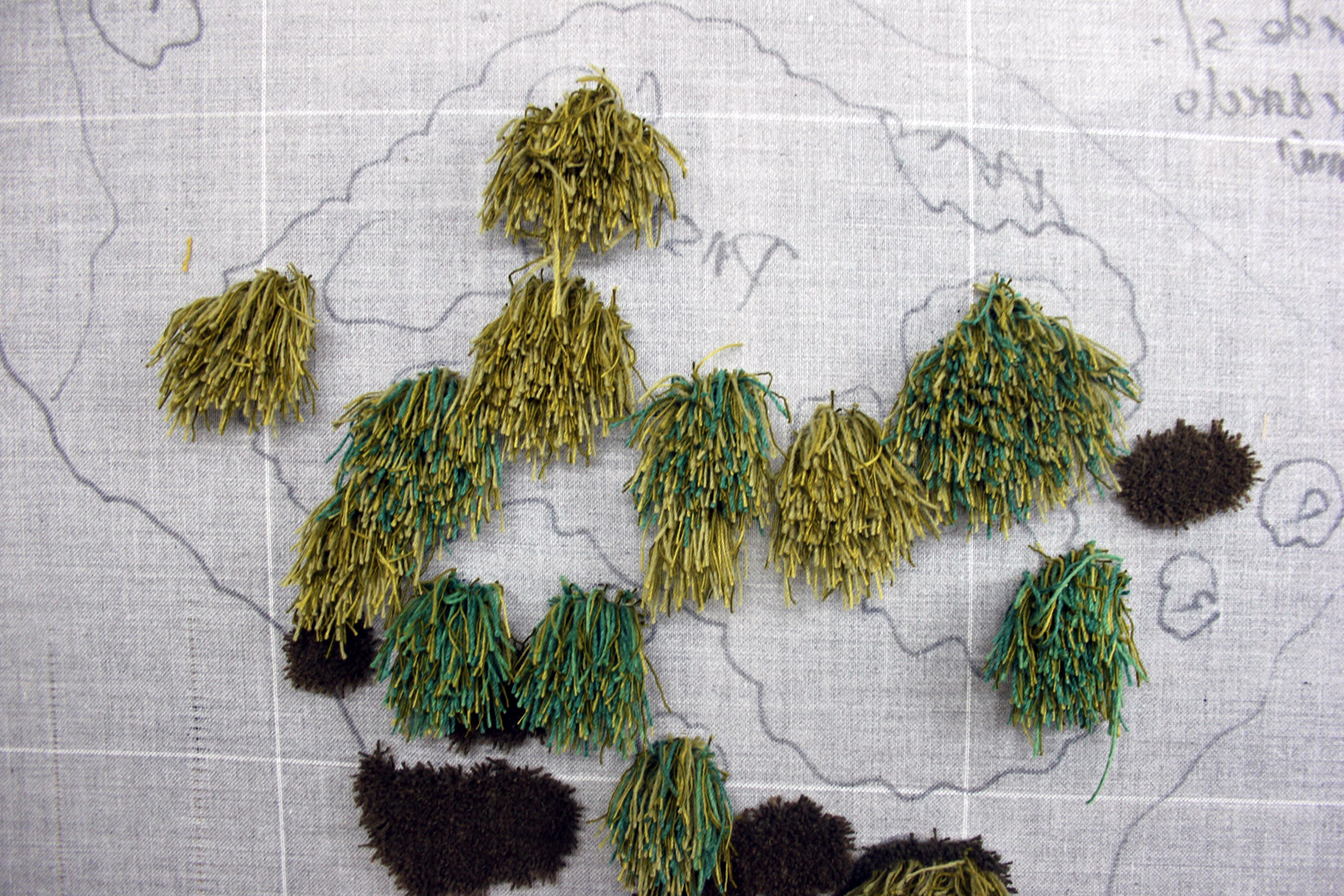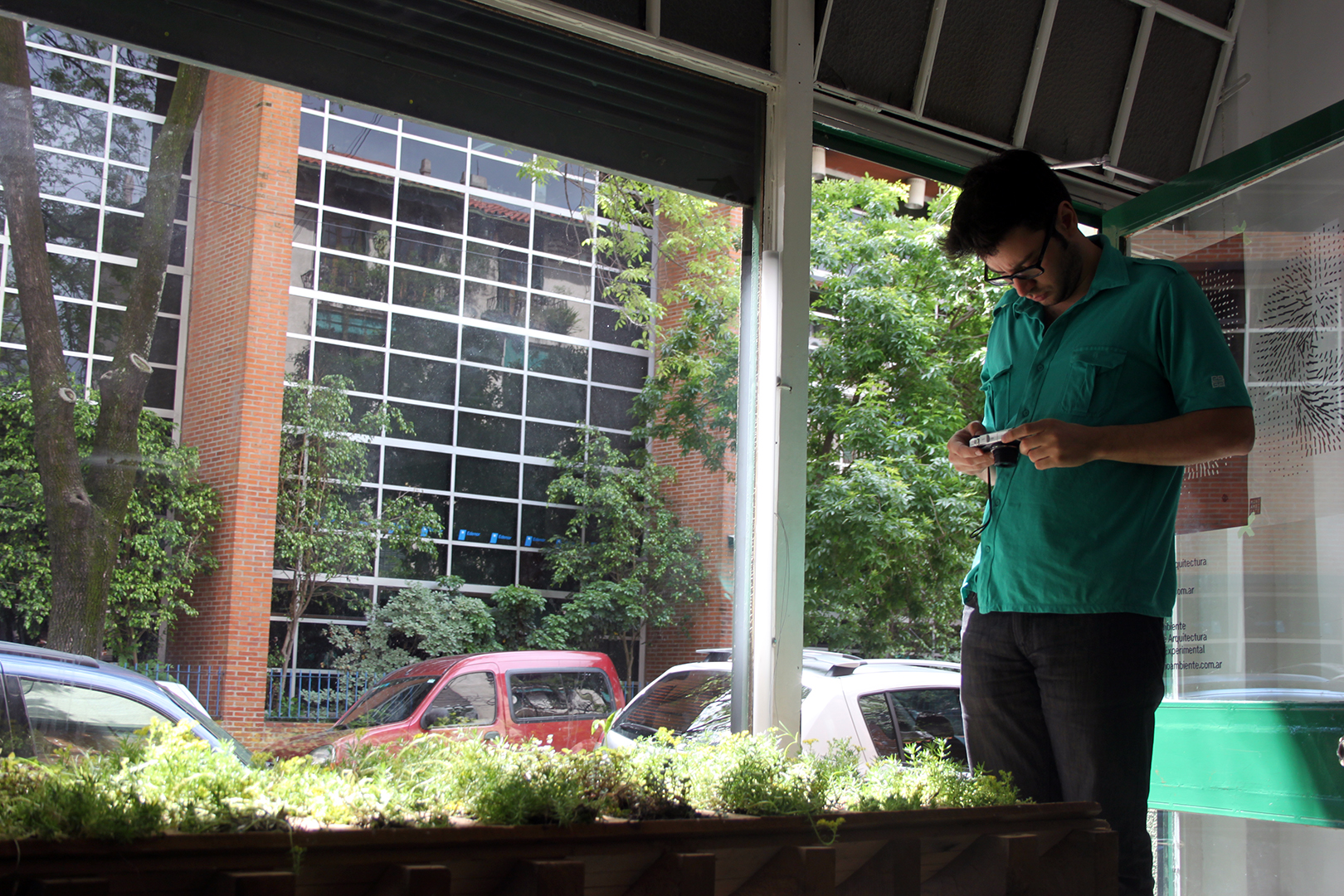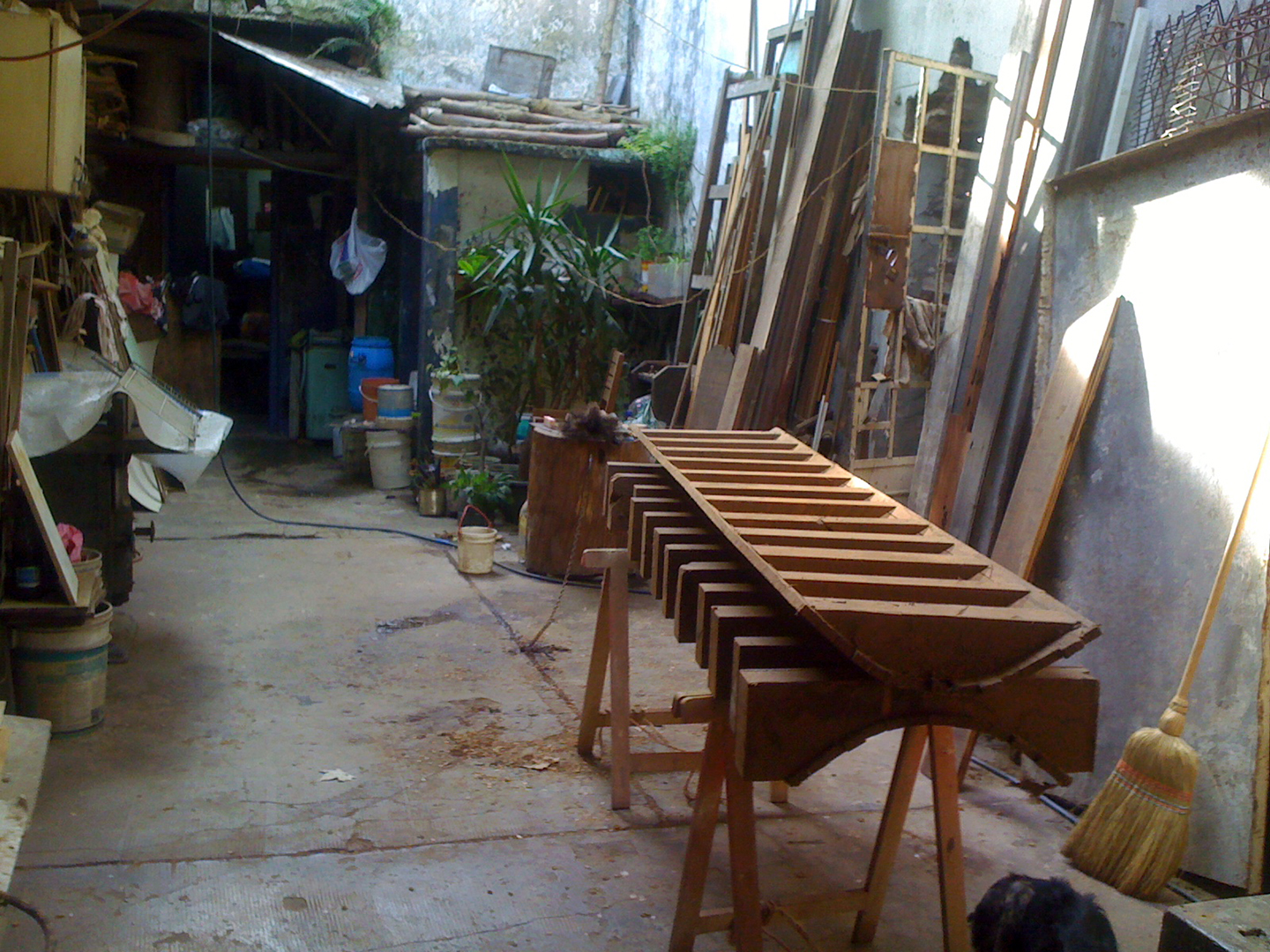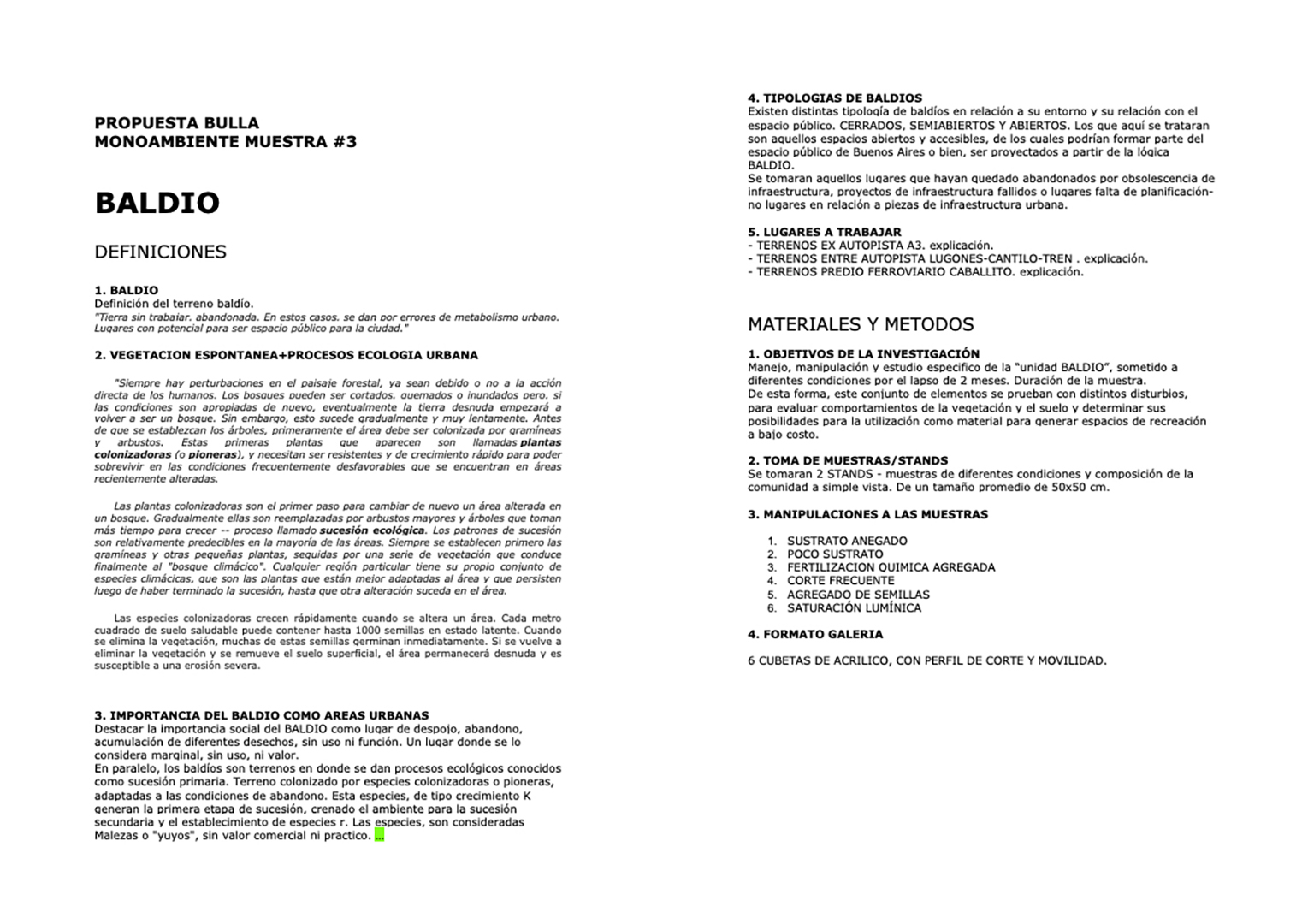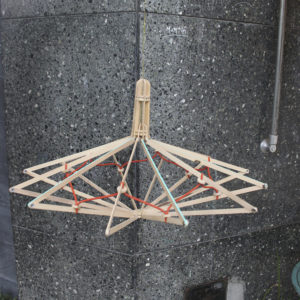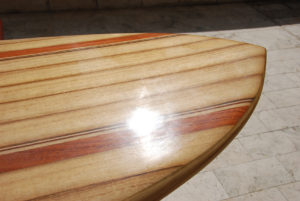Muestra 3
Baldío by Bulla ● Potrero by Alexandra Kehayoglou
21/09/2012 - 21/11/2012
The third landscape
Curatorial text by Martin Huberman
Exhibit # 03 finds in the work of Estudio Bulla and Alexandra Kehayoglou a particular look of the urban landscape, the one that is thought to be forgotten, is known to be unwanted, that piece of nature that seems to fight the belonging of the territory to the city and knowing herself defeated seems to have left aside. Thus was born that third law of the landscape, diverse, unwary and pure. The exhibition undoes itself in the laws of waste lands and pastures, rehearsing their capacities as exhibition pieces while expanding our sensory field and perhaps our own definition of beauty.
The textile landscapes of Alexandra Kehayoglou investigate the earthly origins of our city, traces of the past of a land that was a landscape before the city grew on it, its grasslands designed and built by hand run through the sensory imaginary in carpets and without ends that remind us of where we came from and where we stand.
The acute look that the Bulla Study makes on the territory on which our city was built, invites us to retrace preconceptions about the idea of landscape, environment, botanical culture and even organicity. Waste land is perhaps the most natural of the urban typologies and that perhaps allows us to delve into the very roots of our most direct natural environment.

